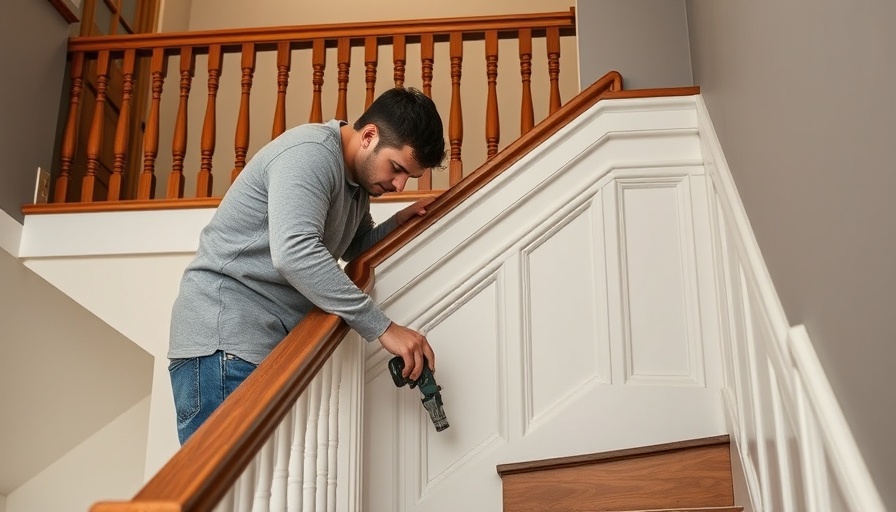
Transform Your Stairs with DIY Wainscoting
Are your stairways feeling drab and uninspired? It’s time to bring life to that space with the charm of DIY wainscoting! Wainscoting not only adds aesthetic appeal but also defines the space, making it feel more inviting and polished. In this piece, we explore the easy steps to install picture frame wainscoting, turning the ordinary into the extraordinary.
The Beauty of Picture Frame Molding
Picture frame molding offers a flexible and visually engaging option for adding depth to your walls without overwhelming complexity. This technique is especially suitable for traditional homes where classic styles shine. If you’re looking for alternatives, techniques like board and batten also provide great character while keeping the process accessible for all DIY enthusiasts.
Essential Supplies for Your Project
Before you get started, gather the following tools and materials:
- 5/16 in. x 11/16 in. panel colonial molding
- Finger-joined chair rail molding
- Miter saw
- Cordless brad nailer
- Pencil and wood filler
- Paintable caulk and sandpaper
- Spacer board cut to 24 inches
These supplies can mostly be found at your local home improvement store, and many can be rented if you don’t own them. Note that step-by-step tutorials have highlighted the ease of installation—perfect for the DIY beginner.
Step-by-Step Installation Guide
Starting with the chair rail is key. Mark an even line on the wall, usually set about 36 inches from the ground. Use an angle for precision and ensure that your cuts are mitered at 45 degrees for perfect corner joins. Attach the chair rail using a brad nailer for a clean finish.
Next, it’s time for the picture frames. Measure out your desired heights and widths, marking them carefully on the wall. Start assembling your frames on the floor if that simplifies the process for you before transferring them to the wall.
Finishing Touches That Matter
Once your frames are installed, caulk the edges for a seamless look. Fill in any nail holes and sand down the rough spots to create a flawless surface for painting. Choosing a paint color that contrasts with your walls can highlight the molding and bring out a unified look throughout your home.
DIY projects like wainscoting not only boost the value of your home but also give you the rewarding experience of personalizing your space. By embracing your creativity, you can transform any area, making it a reflection of your style.
Your Turn to Create!
Are you inspired to give your stairway a facelift? Gather your tools, follow these steps, and enjoy the satisfaction of a job well done. Remember, every project starts with a single step—but the joy of seeing your vision come to life is immeasurable!
 Add Row
Add Row  Add
Add 




Write A Comment